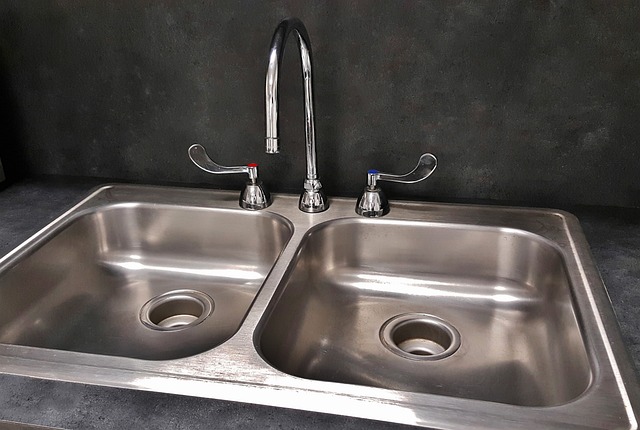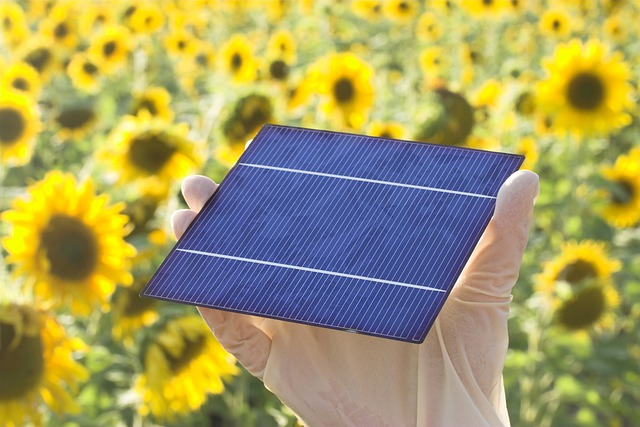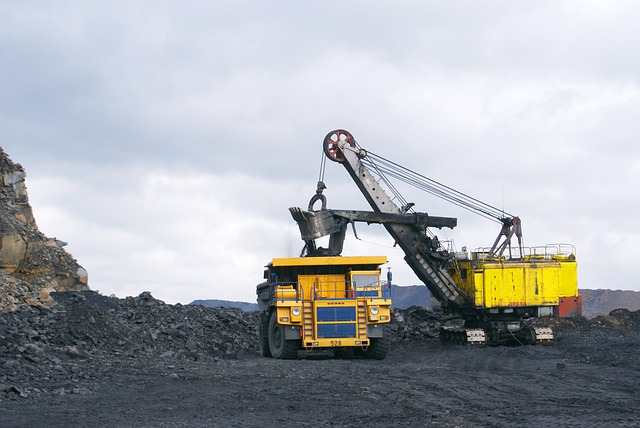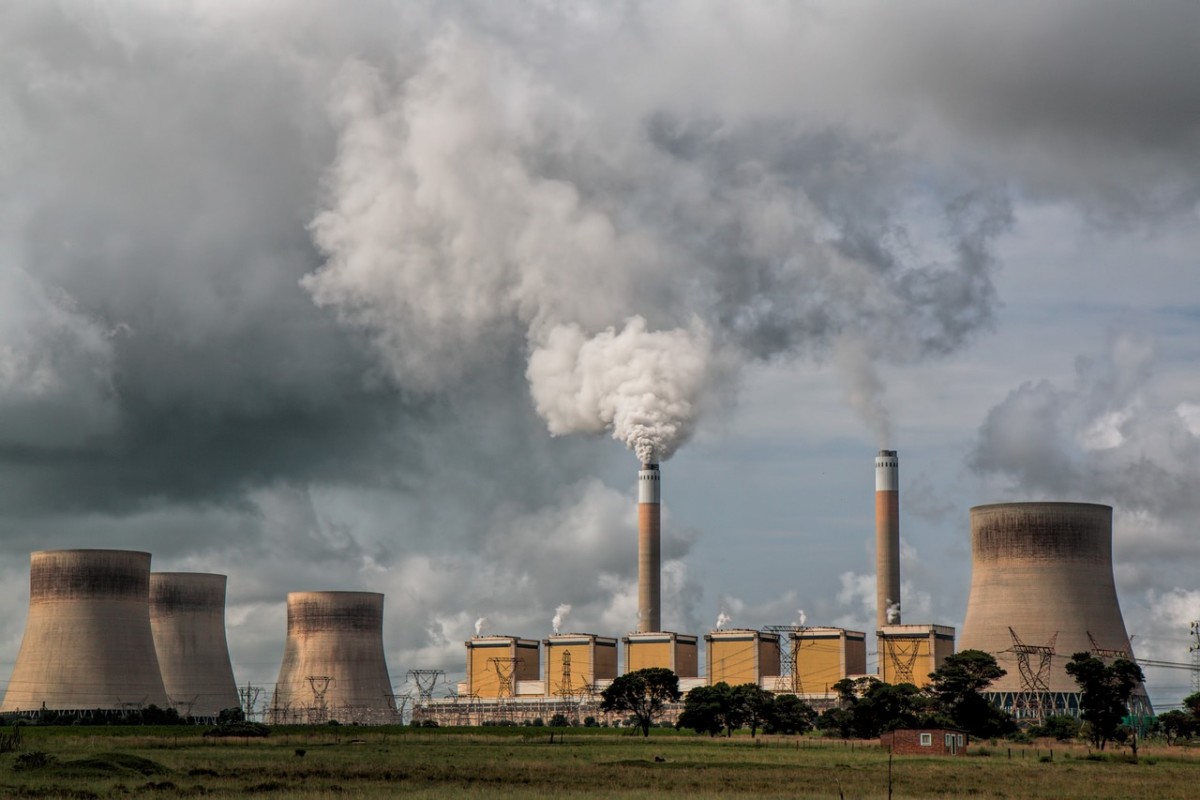10 examples of non-renewable resources
In this article, we will look at 10 examples of non-renewable resources and discuss how they are used in everyday life.
Non-renewable resources are those that cannot be replenished in a short period of time; instead, they take millions of years to form.
As such, it is important to become familiar with the various examples of non-renewable resources and their uses in order to make informed decisions about our energy choices.
A List of 10 examples of non-renewable resources
- Fossil Fuels
- Natural Gas
- Coal
- Oil
- Nuclear Energy
- Uranium
- Steel
- Precious Metals & Minerals
- Phosphate
- Groundwater
Fossil Fuels: The Most Common Non-Renewable Resource
Fossil fuels are the most widely used form of non-renewable energy resource in the world. They include petroleum, natural gas, and coal.
Petroleum is a liquid hydrocarbon found in underground reservoirs that can be burned to produce energy.
Natural gas is a combustible mixture of hydrocarbon gases that are predominantly composed of methane and occurs both deep underground and beneath oceans, lakes, and rivers.
Lastly, coal is a combustible sedimentary rock made up of organic material such as plant matter that has been compressed over millions of years.
All three forms of fossil fuels are used to generate electricity through combustion or by heating water which turns into steam to power turbines; they also provide fuel for transportation systems such as cars and planes.
In addition, these resources are also used in industrial processes like producing plastics or chemicals.
Unfortunately, due to their slow formation rate, once these resources are depleted they cannot be replaced or regenerated making them unsustainable for long-term use.
Oil & Natural Gas: Powering the Global Economy

Oil and natural gas are two of the most important energy sources in the world, providing fuel for transportation, manufacturing, and heating.
Crude oil and natural gas account for over 60% of global energy demand, making them essential drivers of economies around the world.
In addition to powering global industries and economies, oil and natural gas can also be used to create a range of everyday products such as plastics, pharmaceuticals, fertilizers, fabrics, packaging materials, and more.
This means that these resources have a wide-reaching impact on our lives. Without oil and natural gas, it would be hard to imagine how people would live today.
Other non-renewable resources include coal, uranium ore (for nuclear power), and tar sands (petroleum).
Rare earth elements (for electronics) phosphates (used in fertilizer production) aluminum ore (for aluminum products).
Titanium ore (for aircraft parts) nickel ore (for stainless steel alloys) gold ore (used in jewelry production).
Despite their importance as non-renewable sources of energy and materials, they are finite resources that will eventually run out if not managed properly.
Coal: A Reliable, But Controversial Resource
The use of coal as an energy source dates back over 4,000 years. It is a reliable resource for producing large amounts of energy but has become increasingly controversial due to its environmental impacts.
Burning coal releases pollutants into the environment, such as nitrogen oxides and sulfur dioxide, which can lead to acid rain and smog.
The burning of coal also produces carbon dioxide which has been linked to climate change.
In addition, mining operations create air pollution and degrade land quality by disrupting ecosystems and creating hazardous runoff water.
Despite these concerns, many countries around the world still rely heavily on coal for electricity generation and other industrial uses.
This is because it is one of the most abundant resources available on Earth and it is relatively cheap compared to other sources of energy.
Therefore, while there are valid concerns about its environmental impact, coal remains an important part of the global energy landscape and will likely remain so in the future despite increasing calls from environmentalists to phase out its use completely.
The Use of Nuclear Energy as an Energy Source
Nuclear energy is an important and growing source of renewable energy. It is the largest contributor to low-carbon electricity production in the world, making it a viable alternative to traditional fossil fuels.
Plus nuclear power plants are able to generate large amounts of electricity with minimal emissions, which makes them attractive for countries looking to reduce their carbon footprint.
Also, nuclear energy has several advantages over other forms of energy sources, such as its high efficiency, its ability to produce baseload power, and its long-term cost-effectiveness.
Additionally, nuclear energy produces no air pollutants or greenhouse gases while operating and can be used in conjunction with renewable sources such as solar and wind power.
Despite these advantages, there are some drawbacks associated with nuclear energy that should be considered before using this form of energy source.
These include the cost of building new plants and disposing of waste as well as safety concerns related to radiation exposure and potential accidents.
What is Uranium mainly used for?
Uranium is a non-renewable resource that is primarily used to generate nuclear energy.
Nuclear power plants use uranium as fuel, which undergoes a process known as fission to release heat and create electricity.
The vast majority of civilian nuclear power in the world comes from uranium reactors, making it one of the most important resources for generating low-carbon electricity.
Uranium is also used in certain medical treatments and research applications such as radiation therapy, cancer treatment, and radiopharmaceuticals.
Additionally, it has various industrial uses including the manufacturing of smoke detectors, industrial radiography equipment, aircraft parts, and other components requiring high strength and corrosion resistance.
Uranium is also used by some countries for military purposes such as missile guidance systems or warheads.
Finally, because uranium emits radiation over long periods of time it can be used to help detect concealed objects such as explosives or contraband materials in air cargo containers or suitcases at airports.
What is Steel made of?

Steel is primarily composed of iron, with around 2% carbon.
Depending on the type of steel, other elements such as chromium, nickel, molybdenum, and manganese may be added to give the metal different properties.
Stainless steel also contains between 10-20% chromium to prevent rusting.
The combination of these elements alters the mechanical properties of the metal and allows it to be used in a variety of applications such as bridges and buildings.
Steel is produced in two methods: primary production and secondary production.
Primary production involves converting iron ore into crude steel through smelting or chemical reduction while secondary production involves melting scrap metals that have already been used for other purposes.
Steel is an important nonrenewable resource used in countless modern-day applications including construction, packaging materials, machinery components, tools, and even medical equipment.
Mining for Precious Metals & Minerals
Mining for precious metals and minerals is one of the most common forms of non-renewable resource extraction.
Precious metals such as gold, silver, and platinum are often found in underground veins or placer deposits.
Mining these metals requires a variety of specialized equipment including drills, shovels, sifting machines, and separate tables.
In addition to precious metals, non-metallic minerals such as coal, limestone, phosphate rock, sulfur, mica, and talc can be mined from the earth’s surface or from deep underground mines.
Coal mining has been a major source of energy production since the Industrial Revolution; however, it has also caused extensive environmental damage due to the waste materials that are produced during the mining process.
Limestone is commonly used in cement production while phosphate rock is an important source of fertilizer for agricultural crops.
Sulfur is used to produce sulfuric acid which is an important ingredient in many industrial processes; meanwhile, mica and talc are used for insulation purposes as well as cosmetics products such as powder foundations and blushes.
What are Phosphate and its uses?

Did you know, phosphate is an important mineral found in rocks and soil? It has many uses, including fertilizers, cleaning products, food preservatives, and animal feed additives.
Phosphates are also used in the production of steel and some other metals.
Furthermore, phosphates are essential for life as they help to regulate the pH balance of soils while providing essential nutrients to plants and animals.
They can also be used to create phosphoric acid which is used in detergents, cosmetics, and medications.
Phosphate mining can be done either through surface or underground mining operations depending on the location of the deposit.
The use of phosphate has grown significantly over the years due to its wide range of applications.
Why is groundwater important?
Groundwater is essential for human life since it makes up the majority of our drinking water supply. It provides a reliable source of potable water and can be used to irrigate crops and sustain livestock.
On a larger scale, groundwater also helps to maintain river levels during droughts and floods, as wells connected to rivers act as natural reservoirs that store and release water when needed.
Additionally, groundwater can filter out pollutants from surface water sources like lakes and streams before they reach our taps.
This is especially important in agricultural areas where fertilizer runoff poses a risk to our drinking water supplies.
Finally, groundwater plays an important role in maintaining healthy ecosystems by providing habitats for aquatic species like fish and amphibians.
Without access to this clean source of water, many species would struggle to survive in their current habitats.
Examples of 5 Renewable Energy Sources
- Solar Power
- Wind Power
- Geothermal Energy
- Bioenergy
- Hydropower
Let’s briefly look at these natural resources.

One of the most common renewable energy sources is solar power. Solar panels are installed on rooftops or other suitable locations and convert sunlight into electricity.
Photovoltaic cells absorb sunlight and transfer the energy to an inverter, which converts the energy into usable AC current.
Solar energy can be used to power homes, businesses, and even entire cities in some cases.
Wind power is another popular form of renewable energy. Wind turbines capture kinetic energy from wind currents and convert it into usable electricity.
Many farms, communities, and even entire cities have taken advantage of wind power to provide clean and sustainable electricity for their residents.
Geothermal energy is a form of renewable energy that is generated by tapping into underground thermal reservoirs of hot water or steam below the Earth’s surface.
This type of energy can be used for heating buildings as well as producing electrical power with geothermal turbines that utilize steam from underground reservoirs in order to operate turbines that generate electricity.
Bioenergy is another type of renewable energy source that utilizes organic material from plants or animal waste in order to generate electricity or heat up water.
Several different types of bioenergy are available such as biogas, biomass gasification systems, anaerobic digestion systems, biodiesel fuel production systems, etc.
All offer clean sources of renewable energy while also reducing our dependence on fossil fuels such as coal or oil for our needs.
Hydropower is an important source of renewable energy, which uses the power of moving water to produce electricity.
Interestingly, hydropower plants use a turbine to convert the kinetic energy of falling water into mechanical energy, which is then converted into electrical energy.
Hydropower can be generated from both large-scale facilities such as dams and river basins, as well as small-scale systems like run-of-the-river systems and micro hydro installations.
Large-scale hydropower plants have been around for many years and are still one of the most efficient ways to generate electricity.
Micro-hydro installations have seen growth in popularity in recent years due to their low cost and high efficiency.
They are typically used for providing electricity in remote areas where access to traditional grid power is limited or unavailable.
Hydropower is considered a clean form of renewable energy since it does not emit any greenhouse gases while producing electricity, making it a viable alternative to other nonrenewable sources such as coal and natural gas.
Let’s finish with some FAQs

What are the environmental impacts of using nonrenewable resources?
The use of nonrenewable resources has serious environmental impacts. These include air and water pollution, land degradation, and habitat destruction.
The burning of fossil fuels like coal, oil, and natural gas releases harmful pollutants into the atmosphere such as sulfur dioxide (SO2), nitrogen oxides (NOx), carbon monoxide (CO), and particulate matter that can cause serious human health issues and global warming.
Burning these fuels also produces toxic ash that can contaminate soil, waterways, and ocean ecosystems.
Mining for nonrenewable resources such as coal or oil sands can degrade landscapes by depleting soils and destroying habitats.
This can lead to increased levels of sedimentation in rivers which reduces water quality for aquatic life downstream.
Resource extraction is also a major contributor to deforestation which destroys vital habitats for plants and animals while releasing stored carbon dioxide into the atmosphere contributing to climate change without any mitigating benefits from reforestation efforts.
In addition to the immediate environmental impacts from resource extraction itself, nonrenewable resources are not sustainable due to their finite supply leading to increasing prices when demand is high or depletion when resources become scarce making them difficult sources of energy over the long term.
What are the benefits of using nonrenewable resources?
One of the main benefits of using nonrenewable resources is that they are often more affordable than renewable sources, such as solar and wind energy.
This allows for greater access to energy for those who may not have the means to invest in renewable alternatives.
Additionally, their availability makes them easy to use and reliable, ensuring a steady supply of energy when needed.
Nonrenewable resources typically require less maintenance than renewable sources, making them an attractive option for industrial production or manufacturing processes where consistent energy is desired but expensive investments are not viable.
Furthermore, many nonrenewable sources have been in existence longer than their renewable counterparts, meaning they are well-established and highly efficient at delivering large amounts of energy with minimal effort or cost on the part of the user.
Finally, some nonrenewable resources are better suited to certain tasks than renewables due to their high-energy density levels and low environmental impact compared to other forms of fuel or power generation methods.
For example, petroleum products are especially useful in transportation applications because they offer a great deal of power with little ecological damage relative to other fuels such as diesel or natural gas.

How can we reduce the environmental impacts of using nonrenewable resources?
One of the most effective ways to reduce the environmental impacts of using nonrenewable resources is by transitioning to renewable energy sources.
This can be achieved through increased investment in clean technologies such as solar, wind, and geothermal power.
Additionally, utilizing green transportation systems like electric cars and trains can help to reduce carbon emissions from burning fossil fuels.
Furthermore, governments should invest in education programs about energy conservation and sustainable practices that promote long-term environmental stewardship.
Another way of reducing environmental damage from nonrenewable resources is to prioritize efficiency when using them.
For example, improving insulation for homes or businesses can help reduce energy consumption without sacrificing comfort or convenience.
Similarly, switching out inefficient appliances with more efficient models can save a considerable amount of energy over time while also reducing greenhouse gas emissions related to their production and operation.
Finally, recycling products made from these nonrenewable materials is another important strategy for minimizing their negative impacts on the environment.
This includes items such as metal cans, plastic bottles, aluminum foil packaging, and paper products which are all derived from oil and natural gas reserves.
What are some examples of non-renewable resources?
Non-renewable resources are resources that cannot be replenished or replaced in a short time period.
Examples of non-renewable resources include fossil fuels, such as coal and oil, nuclear energy sources like uranium, and minerals like aluminum and copper.
Fossil fuels are formed from the remains of dead plants and animals over millions of years and will not be replenished quickly.
Nuclear energy sources are finite because uranium is found in certain parts of the Earth’s crust which can take thousands of years to form.
Minerals must also be mined from the ground which takes considerable effort to do so.
Other examples of non-renewable resources are natural gas, precious metals (gold, silver), peat moss, salt deposits, phosphates, and sandstone.
Natural gas is a mixture of hydrocarbons that have been trapped underground for millions of years; thus it cannot be replaced quickly due to its complexity.
Precious metals are extracted through mining processes which require tremendous amounts of energy expenditure thus making them nonrenewable as well.
Peat moss is formed over thousands to tens of thousands of years from decaying organic matter making it another example on this list.
Moreover, salt deposits are formed through chemical reactions between different minerals taking place over hundreds if not thousands of years; hence they fall under the category non renewable too.
Finally, both phosphates and sandstone may take up to millions upon millions of years for their formation process thus making them also part of this group as well.
How can a resource be considered non-renewable?
A non-renewable resource is a natural resource that cannot be readily replaced by natural means on a level equal to its consumption.
Examples of non-renewable resources include fossil fuels such as coal, oil, and natural gas, minerals like gold and copper, nuclear energy, and uranium for nuclear power plants.
These rare earth elements are used in electronics such as cell phones, and water in limited supply such as groundwater or underground aquifers.
These resources are finite and once used up cannot be replenished through natural processes at the same rate it is being consumed.
To illustrate this further, consider the example of coal as a finite resource. Coal is formed from decayed plant material over millions of years deep within the Earth’s crust.
This process takes an incredibly long time to occur naturally compared to how quickly humans can dig it out of the ground and burn it for energy production.
Once all the accessible coal has been extracted there will be no more left until additional deposits are created naturally which could take millions of years into the future.
Other examples include petroleum which requires 11 million years to form naturally, while uranium needs 4 billion years; far longer than humans have ever existed on Earth!

In conclusion,
Non-renewable resources are essential for modern life. They provide us with electricity and fuel, allowing us to build our societies and grow as a species.
Without them, our lives would be drastically different; however, it is important to remember that these resources are finite and will eventually run out if not managed carefully.
Fortunately, there are renewable resources such as solar energy, wind power, and water power that can help reduce the need for non-renewables.
The 10 examples of non-renewable resources discussed in this article provide us with a better understanding of how they are used and the potential dangers associated with their consumption.
Please share, Thank you.
Recent Posts
Understanding Energy and Electricity: The Power For Progress
Energy and Electricity Energy and electricity are integral components of modern life, powering everything from homes and businesses to transportation and communication. Without them, the...
The Future of Wind Energy The future of wind energy is set to play a critical role in addressing global energy needs while combating climate change. As renewable energy sources like wind and...


